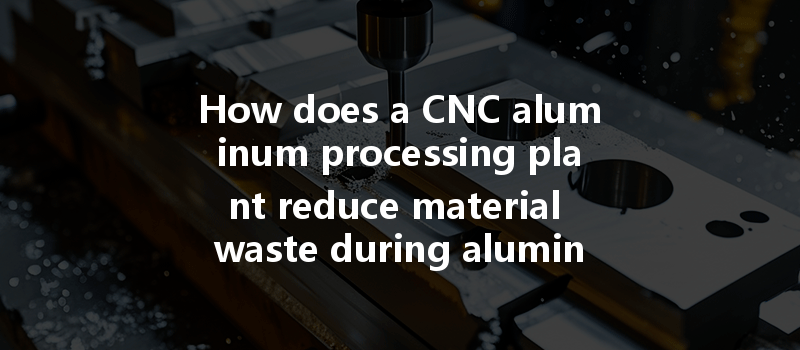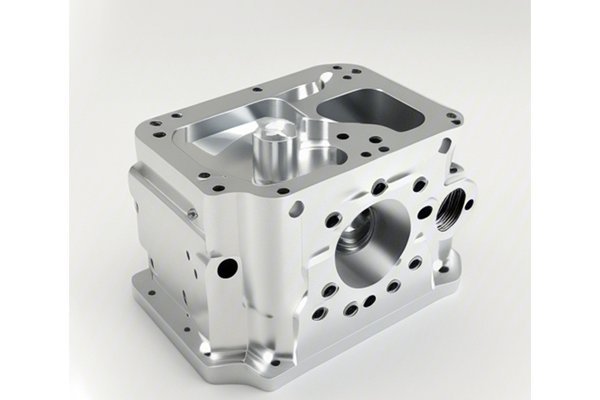: The Importance of Waste Reduction in Manufacturing
Did you know that the global manufacturing industry is responsible for generating nearly 1.3 billion tons of waste annually? In an era where sustainability is not just preferred but essential, manufacturers are under increasing pressure to adopt waste-reduction practices. CNC (Computer Numerical Control) aluminum processing plants have emerged as key players in this arena, effectively minimizing material waste while maintaining cost-efficiency and precision. In a world where the demand for lightweight, high-strength materials like aluminum continues to swell, understanding how these plants operate not only sheds light on sustainability efforts but also reveals innovative techniques that can lead to significant financial savings.
Chapter 1: Understanding CNC Aluminum Processing
CNC aluminum processing involves the use of computer-controlled machine tools to shape and manipulate aluminum into required parts and products. This method offers several advantages over traditional manufacturing processes, including higher precision, repeatability, and the capacity to handle complex designs. However, one of the most pivotal aspects that distinguish CNC processing from conventional methods is its ability to drastically reduce material waste.
1.1 Drawing the Line: The Difference Between Traditional and CNC Processing
In traditional machining, manual operations often lead to significant material waste. Machinists may make mistakes or miscalculate dimensions, resulting in components that must be scrapped. Conversely, CNC machining relies on computer programming to create the exact specifications needed, virtually eliminating human error.
1.2 The Role of Aluminum in Modern Manufacturing
Aluminum is not only lightweight and strong, but it is also highly recyclable. In fact, recycling aluminum saves up to 95% of the energy required to produce new aluminum from ore. Thus, processes that minimize waste not only save materials but also contribute to the overall energy efficiency of manufacturing.
Chapter 2: Key Techniques for Reducing Material Waste
Reducing material waste in CNC aluminum processing involves strategic planning, technology implementation, and continuous monitoring. Below, we explore several pivotal techniques employed by leading manufacturers.
2.1 Advanced Design Tools
Utilizing advanced software programs like CAD (Computer-Aided Design) and CAM (Computer-Aided Manufacturing) can enhance the design process. These tools allow engineers to simulate the full lifecycle of a part, making necessary adjustments before any cutting begins. Here’s how they contribute to waste reduction:
2.2 Efficient Toolpath Strategies
CNC machining relies heavily on toolpath generation. By optimizing the toolpath—essentially the route the cutting tool takes—manufacturers can reduce the cutting time and waste, significantly leading to less scrap material. Techniques include:
2.3 Material Nesting Techniques
Nesting entails arranging cutting patterns as efficiently as possible on a raw aluminum sheet. Advanced nesting software analyzes the shapes of the parts to maximize the use of the material and minimize scrap. This could involve:
2.4 Reclamation and Recycling Systems
CNC aluminum processing plants often establish in-house systems for reclaiming and recycling scrap material generated during machining. This benefits manufacturers by converting waste back into usable material. Best practices include:
Chapter 3: Employee Training and Best Practices

To truly embed a culture of waste reduction, CNC aluminum processing plants need to focus on employee training and operational excellence. Each team member should have a clear understanding of sustainability goals and their part in achieving them.
3.1 Team Development Programs
Conducting regular training sessions on waste reduction techniques, material properties, and advanced machining practices fosters an engaged workforce that is aware of the impacts of material waste.
3.2 Implementing Best Practices
Every employee should adopt best practices that emphasize quality, precision, and attentiveness. Examples include:
Chapter 4: Monitoring and Measuring Waste
To effectively manage and reduce waste, it’s vital to have robust monitoring systems in place.
4.1 Data Collection
Utilizing smart technologies like IoT sensors can provide real-time data monitoring and tracking throughout the production process. This data can help identify patterns in waste generation and lead to informed decision-making.
4.2 Waste Metrics
Establishing key performance indicators (KPIs) related to waste can help gauge success in waste-reduction efforts. Useful metrics may include:
Chapter 5: The Economic Benefits of Waste Reduction
While the environmental benefits are evident, reducing material waste also has substantial financial advantages for companies. The savings can be significant and can arise from various avenues:
5.1 Cost Savings
By minimizing waste, companies can directly reduce costs related to raw material purchases. As aluminum becomes increasingly expensive, the long-term benefits become evident.
5.2 Increased Production Efficiency
Less waste means that machines can operate more efficiently, allowing for more outputs over time and maximizing the utilization of existing resources.
5.3 Competitive Advantage
Companies that demonstrate a commitment to sustainability and waste reduction can position themselves favorably in the marketplace, attracting customers who value environmental responsibility.
: The Road Ahead for CNC Aluminum Processing Plants
To summarize, reducing material waste in CNC aluminum processing plants is not just a passing trend—it’s a fundamental aspect of modern manufacturing that promises both environmental and economic benefits. By leveraging advanced design tools, optimizing toolpaths, employing efficient nesting techniques, and investing in employee training, manufacturers can minimize waste effectively.
In an industry facing increasing scrutiny regarding sustainability, it’s imperative for CNC aluminum processing businesses to innovate continuously and implement waste-reduction strategies. As we move towards a more sustainable future, the practices outlined in this blog are not only best practices—they’re necessities.
Ultimately, waste reduction is not just about conserving material; it is a holistic approach that fosters innovation, enhances efficiency, and cultivates a sustainable corporate culture. In a world where every ounce of material counts, understanding and implementing waste reduction strategies becomes essential for success. As manufacturers embark on this journey, they should be reminded that every small step towards reducing waste contributes to a larger vision of responsible production and environmental stewardship.






